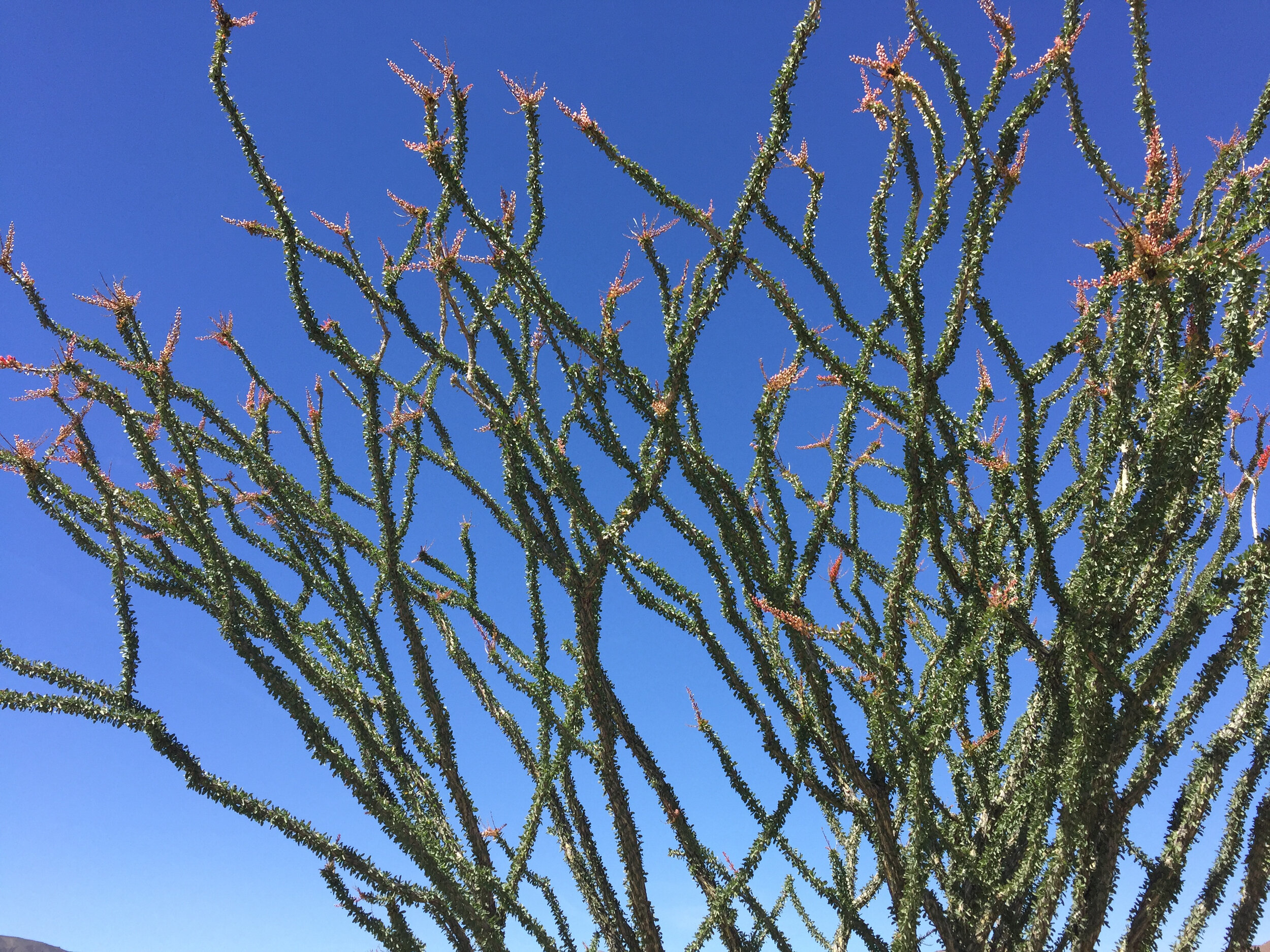Joshua Tree National Park
Tony and Peggy standing under the shade of a Joshua Tree
Joshua Tree National Park actually straddles the higher-elevation Mojave Desert ecosystem and the lower Colorado Desert, in the eastern portion of the park that’s below 3,000 feet.
In the Mojave Desert portion of the park, the dominant geology is hills of well-rounded bare rock outcrops. This rock is composed of rough, light-colored granite known as quartz monzonite. The rock has been greatly eroded by wind and rain, forming the huge round boulders that are so popular among rock-climbers. The rough texture differs from areas where snow and ice polishes the surfaces (such as in Yosemite).
If you can, go camping in Joshua Tree. In addition to the sights of daytime, the night sky is absolutely spectacular. Officially a “Dark Sky Park,” Joshua Tree has some of the darkest skies in southern California and a stunning view of the Milky Way. There are nine primitive campgrounds; Cottonwood has the darkest of the dark skies.
Joshua Tree National Park is a visual treat any part of the day or night, and any time of the year. Still, my favorite time to visit is in spring when wildflowers abound.
A prickly group
The park is, of course, named for the Mojave native that grows here in abundance at elevations of 1,300 to 5,900 feet: the Joshua Tree. This majestic beauty is one of my favorite plants in the whole world. Scientifically known as Yucca brevifolia (say it aloud, it’s fun!) the tree has a very recognizable shape with long reaching arms ending in balls of leaves and flowers. Joshua Trees look like they would be right at home in a Dr. Seuss book. The evergreen leaves are dark green and shaped like a bayonet with a sharp point. In early spring, creamy white flowers may adorn the tips of the branches, though they don’t necessarily bloom every year. The Joshua Tree is pollinated only by the yucca moth, in a symbiotic relationship that neither tree nor moth could thrive without.
It’s said that the name Joshua Tree came from Mormon settlers who were reminded of the biblical story of Joshua holding his hand outreached to guide the Israelites, though that origin has some holes in it.
The branches of the Ocotillo
Ocotillo has a short trunk and long (up to 20 feet), spiny stems. In March through June, after a rainfall, the tips of the stems bloom with dense clusters of beautiful, bright red, edible flowers and the stems are covered with tiny leaves. People often use the stems or living ocotillo as fencing, taking advantage of the spines.
Palo Verde, which is Spanish for “green stick,” is named for the green truck and branches that perform photosynthesis in this tree. This allows the tree to have little to no leaves, which is a common desert adaptation for drought-resistance.
The very prickly teddy bear cactus.
Many varieties of cactus grow in Joshua Tree, particularly in the lower elevations of the park. Teddy bear cholla is one of the common varieties, and within the Park there is a large and popular stand of these cactus. Don’t let the fluffy appearance fool you, though! They are also known as jumping cholla because the spines easily become attached to the fur or skin of passing animals, including humans. The tiny spines have even tinier barbs, making removal of spines from skin very painful. Enjoy these beauty-beasts from afar!
The California fan palm, the only palm native to California, is found naturally in five areas of the park where water naturally occurs year round. These rare areas are called oases, and are very popular among bird-watching visitors to the park. All sorts of wildlife hangs out near these constant water sources. A day of activity that does not include climbing the boulders might be spent hiking to one of these beautiful oases.


